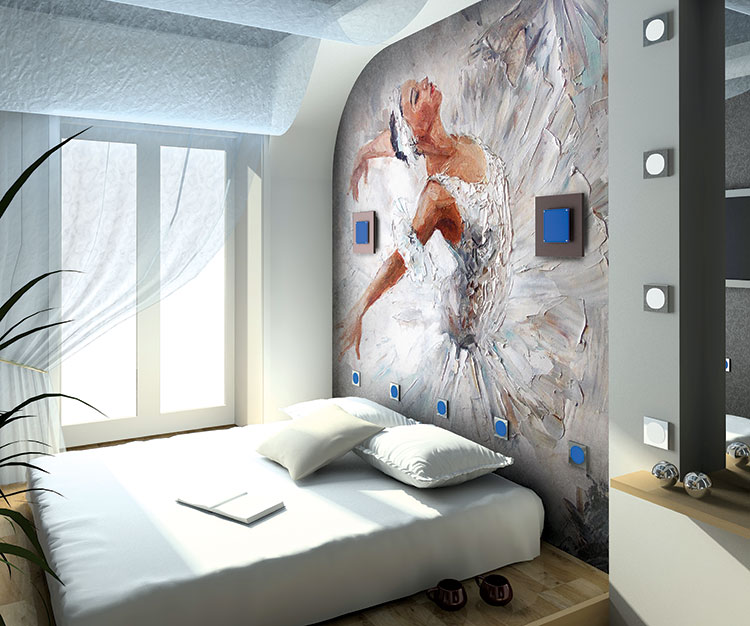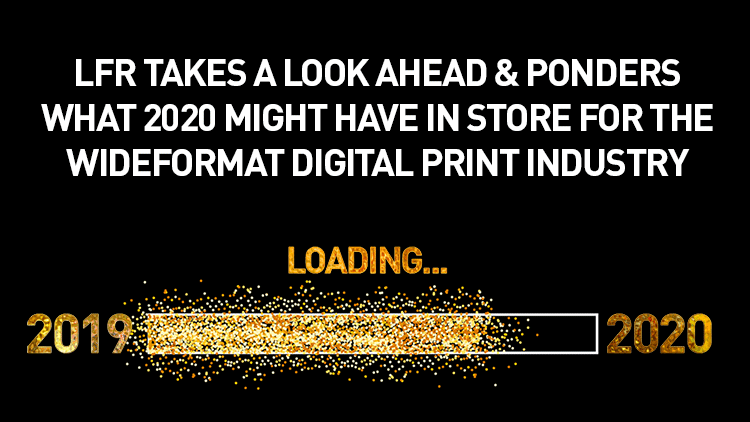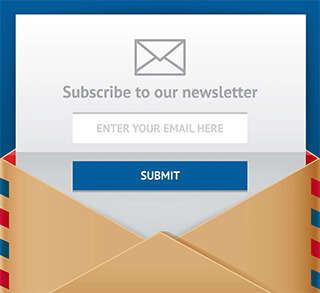We’ll start with a list, everyone loves a list, the internet told me so, and the internet is always right. Right? Wrong, but that’s another blog we’ll publish for you soon!
For now, in case you’ve got a short attention span, here’s the 5 things that we think will matter the most in 2020…
- Digital print dominance and the software needed to unlock it.
- Sustainability and the need to replace PVC as your media of choice.
- Textile printing is about to take off.
- Print for décor, bespoke wallcoverings and interiors.
- Personalisation and consumerisation and localisation.
Digital print dominance and the software needed to unlock it
“Everything that can become digital will become digital. Printing is no exception.” so said Benny Landa in the early 1990s’. Benny founded Indigo and later sold it to Hewlett-Packard for $830M USD, so I’m happy to take his advice on board.
Of course not everyone believed in this digital revolution. Blockbusters were once offered Netflix for $50 million but laughed at the offer – at the time of writing Netflix is worth just shy of $130 billion, while a Blockbusters store on every High Street is now a grainy memory stored on a VHS cassette.
More evidence? Uber and Spotify – those digital businesses haven’t simply disrupted their markets, they’ve all but destroyed the old ways of delivering that product or service. Others such as AirBnB have created an entirely new business opportunity that didn’t previously exist at all.
What do all of those digital businesses have in common? The simple answer is software. Software has made the product easier to access, offered improved customer choice and made the whole process easier to engage with and execute for anyone with an Internet connection.
There’s a problem in our industry though. We’re all far too fixated on the hardware. Software on the prepress and production side is fine – thanks Adobe – but on the sales side not so much. When you step back and take a look from afar, our relationship with software as a business and product delivery tool really isn’t great.
Whether the hardware is a £25K roll-to-roll printer or a £500K flatbed, the probability is that the included software will amount to little more than a glorified printer driver. There is so much more we could and should be doing.
Certainly as we move towards new business in new sectors like interior décor, wallcoverings and personalisation, all of which take us ever closer to the B2C consumer of print, then the need for better software to fully exploit the variety of exciting new opportunities to it’s fullest degree has never been greater or more important than it is today.
New customers are becoming increasingly aware of the digital print possibilities; vehicle wrapping demonstrations can now be found at every consumer car show you might attend, digitally printed wallpaper and furniture are now regularly featured in home décor publications and blogs, and all of those things are now routinely shared as objects of desire across social media. More potential customers are interested in customised print than ever, and they’re now going online to try and find print providers.
If you wish to be their print service provider of choice, you need to be more visible so customers don’t just browse right on past you, and ideally you need to be creating software gateways that make your print production services easier for those customers to access, to engage with, and even to customise to their requirements.
Manufacturers also have to drive this more effectively. Software really is the key to unlock the digital dominance of print and to increase sales volumes, and as an industry we need to be tackling this issue better than we have to date. Let’s hope 2020 is the year that we open our eyes and take software more seriously, even if the answers have to come from outside our industry with bought in expertise.
Certainly the days of putting a cut-down RIP in the box and calling it a solution are over. It has to be over. Because as a ‘solution’ it’s simply not good enough for the modern online era.
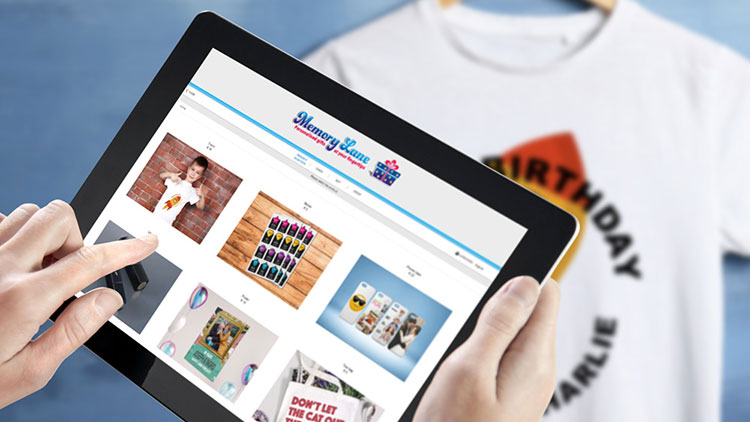
Sustainability and the need to replace PVC as your media of choice
The power of the consumer is going to drive us towards sustainability like never before. It seems like we’ve been talking about going green forever, but the tipping point is coming.
We all love PVC, or rather we love that it works, and it makes our prints look great, and all of our preferred suppliers sell it, so it’s competitively priced, and our customers know it and trust it. The trouble is, it’s a horrible material; it’s a major contaminant, it’s non-recyclable, non-biodegradable and it lasts a very very long time in landfill.
The structured phase-out of PVC in our supply chain is coming – and some of your big brand customers are about to tell you that they can no longer buy printed PVC products from you.
Another list for you, in alphabetic order this time; Adidas, Apple, Carlsberg, Estée Lauder, Evian, Ford, General Motors, Honda, IKEA, Marks & Spencer, Mercedes Benz, Microsoft, Nestlé, Nike, Nissan and so it goes on.
The common ground for all of those corporations? All have recently announced PVC phase-out policies, and a commitment to ultimately being PVC-free.
So, dear reader, if you service that level of customer you better start figuring out your polyvinylchlorides from your polypropylenes, because you’re going to be asked awkward questions and you need to have viable answers!
Shifting banners to textiles might be one answer, use of recycled materials like polyester another possibility, and as the duration of promotional print campaigns continue to decrease in length then it’s entirely viable for paper-based substrates to make a return for both indoor and short-term outdoor use.
Inks are another topic that we’ve all gladly turned a blind eye to for a long time, but just like the paint industry where water-based now rules, we’re going to have to see a shift towards friendlier and less damaging ink – and again as campaign durations reduce then the less damaging inks become ever more viable.
Historically the block to being ‘greener’ has been resistance – from every single part of the chain – to the increased prices that often accompany eco-friendlier print production. As being greener becomes the norm, volumes will increase and then prices will drop. Further, because many big corporations are committing publicly to a planet-friendlier outlook, they may be more prepared now than at any time previously to accept that prices may have to be increased in order to meet their stated sustainability and PVC-free goals. Let’s hope so.
Textile printing is about to take off
As an example of how digital printing can bring improvements in both sustainability and efficiency, there are perhaps few better examples than in textile printing – in 2018 the digital printing of textiles saved over 40 billion litres of water worldwide, and with digital thus far only accounting for about 5% of all textile printing by volume this is just the tip of the iceberg. Digital also uses significantly less ink, and will dramatically reduce the volumes of polluting waste versus traditional textile print processes.
That number again, 5%. Only 5% of textile print is produced digitally. Digital is in it’s infancy in the textile market, and that alone means it is a significant opportunity – again, the Landa mantra, all things will become digital and print – even textile print – is no exception.
Smithers Pira suggest digitally printed textiles market will grow to €4.9bn (£4.22bn) by 2023, a growth of 11.6% annually – personally I think that might be conservative, because I believe we’re on the cusp of a digital revolution in textile printing.
How so? This year, in one fell swoop HP and their Stitch machine have redefined the whole textile printing space – they’ve brought a level of plug and play that didn’t previously exist, and made dye-sublimation printing significantly simpler and more accessible.
It’s also important that you don’t sulk if you’re not HP, because I’m convinced that their entry in to this space will increase the uptake of digital textile printing right across the board. HP will grow the market, and many customers that have previously been resistant to dye-sub printing will now be more interested than at any time previously. I predict that every supplier has the potential to increase their textile printer sales on the back of the HP Stitch wave.
We’re all already in the sign and display market, many of us are in retail, now we’ve all suddenly been handed soft signage, sportswear, apparel and fashion, home furnishing and interior décor to contend with.
For 2020 you should embrace these opportunities, find out more, learn about the sustainability benefits of printing to textiles, and learn about the new markets and opportunities that exist in the consumer space – because dye-sublimation, a technology that has been with us since the dawn of digital printing, is about to step out of the shadows and redefine print as we understand it.
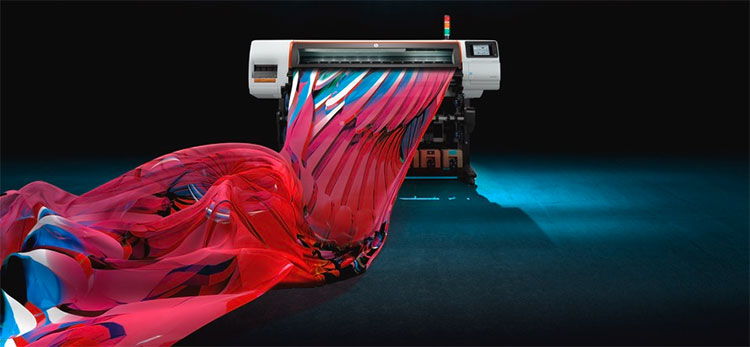
Print for décor, bespoke wallcoverings and interiors
The global digitally printed wallpaper market has been predicted to grow at 23.6% annually (CAGR) between now and 2025 – figures from Energias Market Research – by which time the market will reach a total value of USD $10.4 billion. That’s just the digitally printed stuff. You should definitely be interested.
In offices we’re seeing bespoke wallpaper being used more to create a motivating, stimulating and less sterile workplace.
Talking of sterile, hospitals are increasingly using digital wallpaper to make their spaces more friendly and less cold and intimidating, particularly true in childrens wards and treatment rooms where familiar characters and bright colours increase their levels of comfort and relaxation.
Much like offices, we are seeing schools and colleges using digital wallcovering to create a more inspiring and motivational space. In restaurants and cafes we’re seeing more and more printed walls and tabletops that create a brighter more vibrant environment and of course help to better convey the brands story.
Home-owners are the great untapped market for wide-format – more on that shortly – but it’s on us as an industry to open up that market by creating greater consumer awareness and thus increasing the pull for these desirable digitally printed products.
Wallcoverings are undoubtedly a big opportunity, and one you should definitely be taking seriously. If you do, here’s some additional advice; give consideration to treating this area of your business as an entirely separate entity – because these customers are not fluent in the language of print; wide-format, UV flatbed, printheads and picolitres – these are all foreign terms that they don’t understand and don’t want to. Instead we have to talk to these new customers in an emotive and friendly tone that conveys the desirability of the printed products we can create for them, and that’s perhaps best done under a different brand, on a different website and through different social channels.
Personalisation and consumerisation and localisation
Someone once told me that no-one ever throws away something that has their name printed on it – and it’s a concept that rings true. See personalising a product changes it from being just a thing into being your thing, like a school jumper it’s now yours because it has your name on it and no-one else can have it. More importantly it transforms a regular object into something that holds greater meaning, particularly if it happens to be a gift, because there’s now an emotional connection. In the simplest of terms, personalised gifts are treasured more.
Digital makes this kind of mass production of one-offs feasible (sic), RIP and workflow software allows us to add variable data to a file and print off hundreds, even thousands, of USB sticks or badges or sports team uniforms, each with a different name, logo or even image on it.
This personalisation has hit the consumer market already – Moonpig cards are a great example of a business built on providing personalised print – but we’re still very early on in this personalisation process, and there is lots more to come.
Our most important and expensive purchase is usually the home we live in and the things we put in it; but they can all be a bit samey right? Do we get our sofa from IKEA or their main competitor? There are other choices of course, but not really that many, so whilst we’re always looking for décor and furnishing that appeals to our own personal taste and conveys at least a little of our personality, we’re still restricted because retail products are generally stocked based on their popularity, and if it’s popular then a lot of people have that exact same thing.
Digital print changes that completely; a previously limited choice is now unlimited and unrestricted – sofa from IKEA? How about that choice now just serves as a frame, a blank canvas, and we print our own fabric for the sofa? How about we match that with personalised wallpaper, personalised splashbacks in the kitchen and personalised flooring in the shower? Wrap the car while we’re at it, because in a world where everyone wants to be different and inject their own personality in to the homes they live in and the things they own, digital print makes it all possible.
We have barely scratched the surface of selling bespoke print to this B2C consumer market, but it is coming, and if it reaches that tipping point where digitally printed items become a necessity in the age-old battle of Keeping Up with the Joneses, then it has the very real potential to explode.
Do you know what I like best about this? It brings digital printing back to a local level. Historically as signmakers and digital printers our customers were local businesses. At a local level our customer was a man with a van that he wanted signwritten or wrapped. With personalisation that same man potentially now brings with him a partner that wants a kitchen and lounge decorated to their own unique taste, kids that want their bedroom wallpaper customised, and maybe even an older sibling who wants his car wrapped in something so gaudy that only social media could like it!
Personalisation to a new B2C market of local consumers is coming. Prepare yourself. Be ready. Because I believe 2020 has the potential to bring some significant opportunities for the forward-thinking digital print professional.
